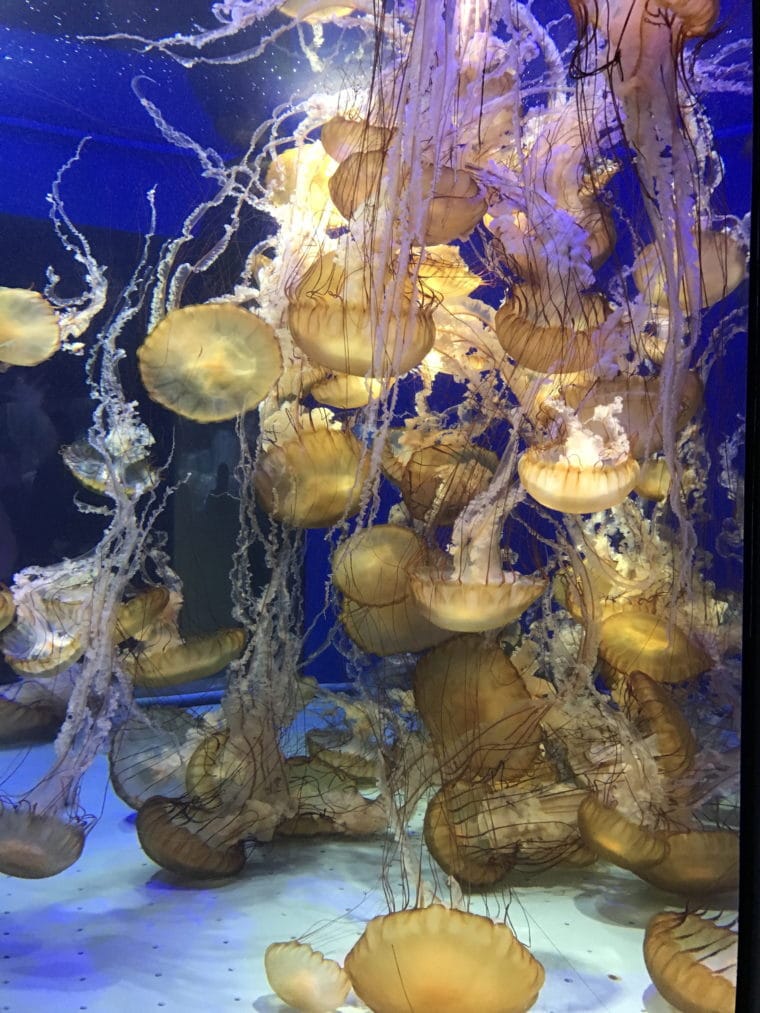

Meanwhile, if people are having more unpleasant encounters with jellyfish, is it because they’re taking over the seas or because we are? Researchers in a couple parts of the world have reported a drop in the number of jellyfish species they are encountering. While some jellyfish species seem to thrive on human disturbance-off the coast of Namibia, for example, overfishing may have tipped the ecosystem into a new state dominated by compass and crystal jellyfish-other more finicky species appear to be declining. “A big jellyfish bloom makes the headlines, while a lack of a jellyfish bloom isn’t even worth reporting,” says Lucas Brotz, a marine zoologist at the University of British Columbia. Jellyfish populations fluctuate naturally, and people tend to notice only the boom part of the cycle. One website warned of the “ attack of the blob.” Another predicted “ goomageddon.”īut scientists say the situation is more complicated than such headlines suggest.

Situations like these led to a spate of reports that jellyfish were taking over the seas. In 2013 a Swedish nuclear plant temporarily shut down because moon jellies were blocking its intake pipes. In 2006, beaches in Italy and Spain were closed because of a bloom of jellyfish known as mauve stingers. In other parts of the world, swarms of jellyfish have menaced swimmers and clogged fishing nets. Fish couldn’t compete with the jellies for food-sea walnuts eat as much as 10 times their body weight a day-and many fish became food for the jellies.

In the Black Sea it reproduced so prolifically that by 1989 it had reached densities of up to 11 per cubic foot of water. A native of the western Atlantic, it presumably had been transported in a ship’s ballast water and then been discharged. In the 1980s a comb jelly that’s known formally as Mnemiopsis leidyi and informally as the sea walnut showed up in the Black Sea. In recent decades jellyfish populations in some parts of the world have boomed. Some develop into tentacles, for example others become reproductive organs. Instead of simply growing larger, the embryo sprouts new “bodies,” which take on different functions. What looks like a single man-of-war is technically a colony that developed from the same embryo. Jellyfish like the dreaded Portuguese man-of-war are also related to corals, but they’re part of a different subgroup, the siphonophores, which practice an unusual form of collective living.

In some species the oral arms have mouths of their own. To reel it into their mouths, they use streamer-like appendages known as oral arms. They propel themselves through the water by contracting the muscles of their bells, and their tentacles are equipped with stinging cells that shoot out tiny barbed tubes to harpoon floating prey. (A phylum is such a broad taxonomic category that humans, fish, snakes, frogs, and all other animals with a backbone belong to the same one-the chordates-as do salps, which are sometimes lumped with jellies.) As adults, true jellies are shaped like upside-down saucers or billowing parachutes. They belong to the class Scyphozoa, in the phylum Cnidaria, which also includes corals. Moon jellies and their cousins, which include lion’s mane jellies and sea nettles, are known as true jellies. Scientists call the near-miraculous process transdifferentiation. It’s as if a frog, say, were to revert to a tadpole or a butterfly to a caterpillar. The juvenile then starts the jellyfish’s life cycle all over again. Members of the species can reverse the aging process so that instead of expiring, they reconstitute themselves as juveniles. The so-called immortal jellyfish resembles a tiny, hairy thimble and lives in the Mediterranean Sea and also off Japan. Most astonishing of all, some jellies seem able to reproduce from beyond the grave. Jellyfish can produce offspring both sexually and asexually depending on the species, they may be able to create copies of themselves by dividing in two, or laying down little pods of cells, or spinning off tiny snowflake-shaped clones in a process known as strobilation. When it comes to reproduction, they’re some of the most versatile creatures on the planet. Not surprisingly, given their diverse evolutionary history, jellies exhibit a fantastic range of shapes, sizes, and behaviors.


 0 kommentar(er)
0 kommentar(er)
